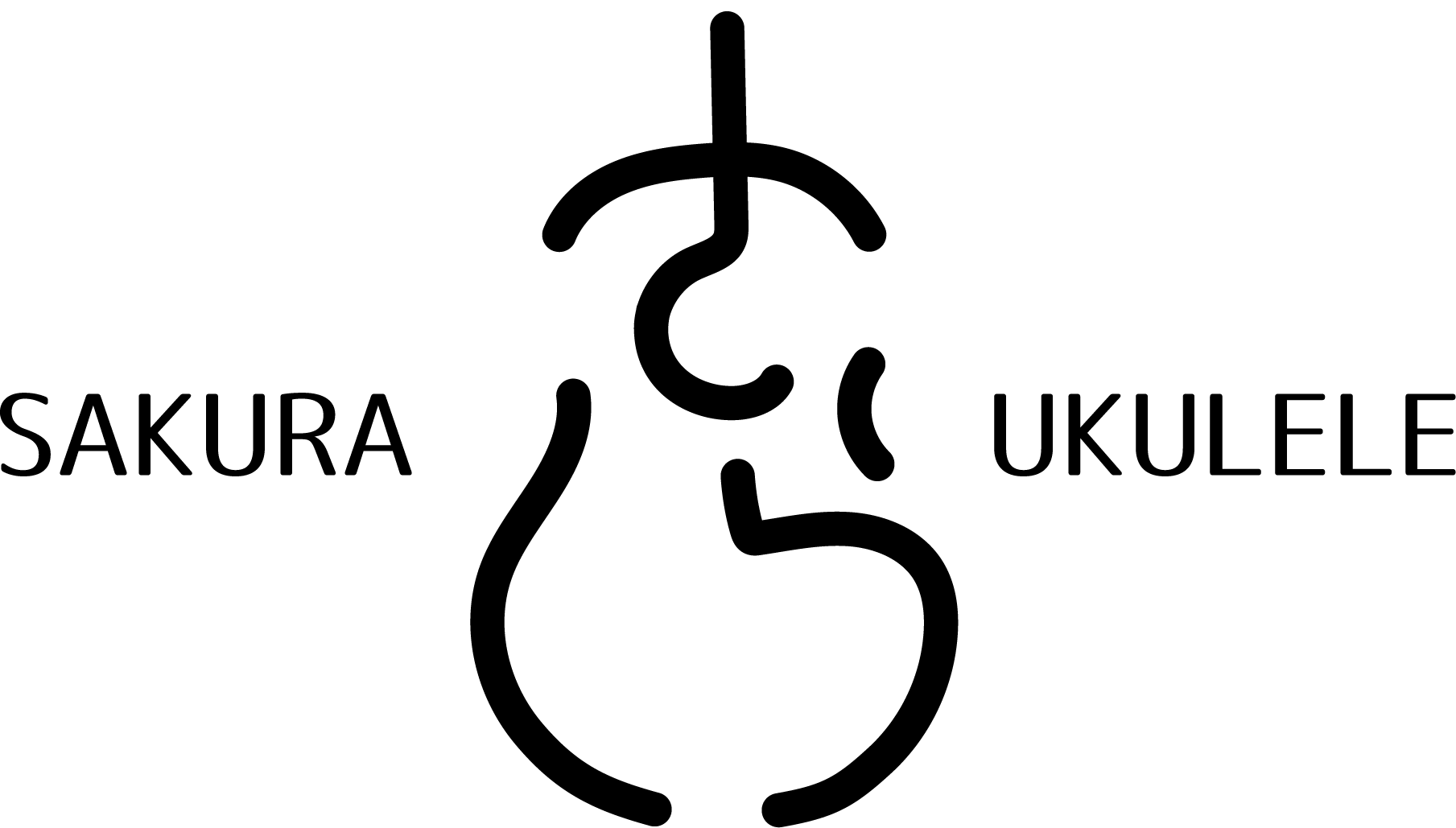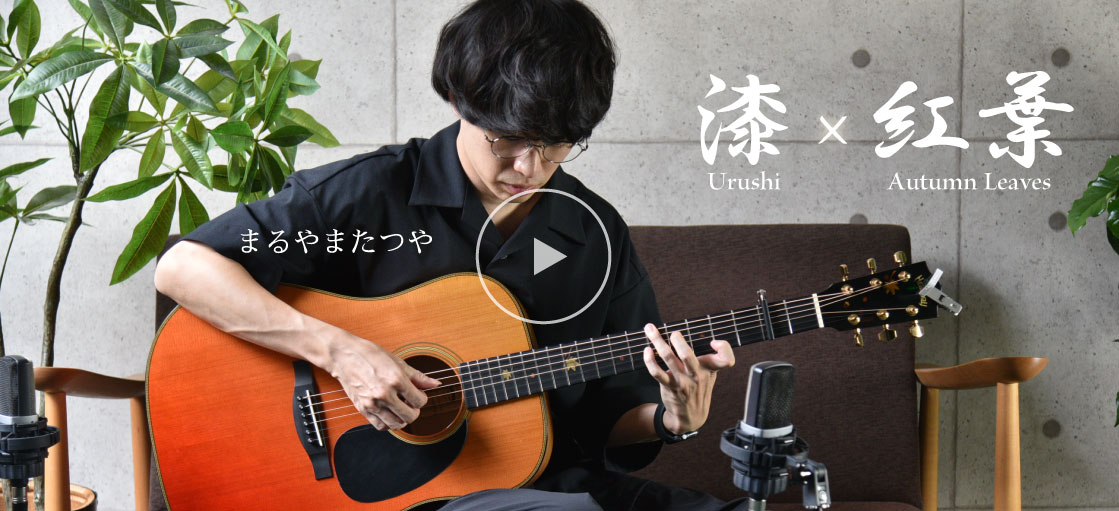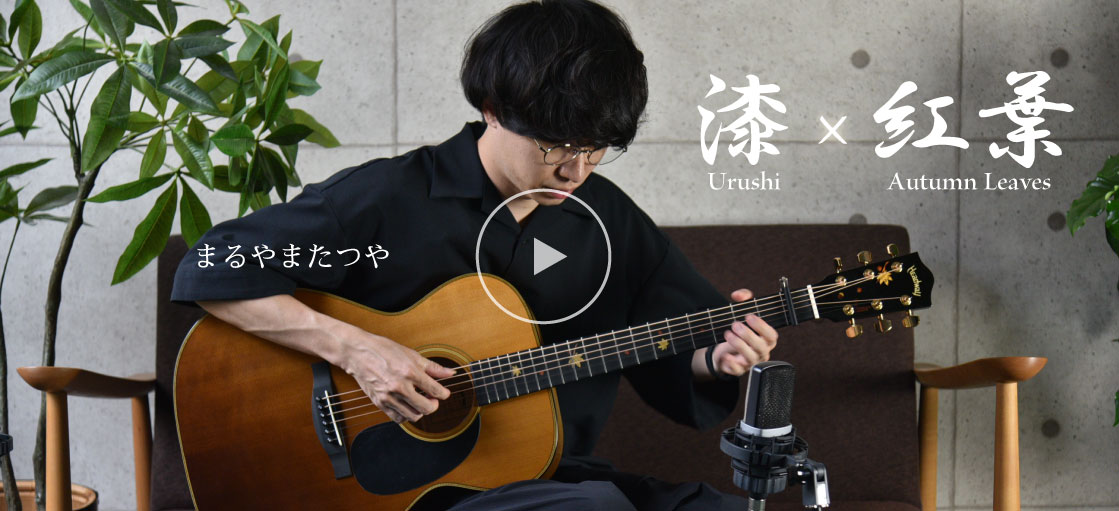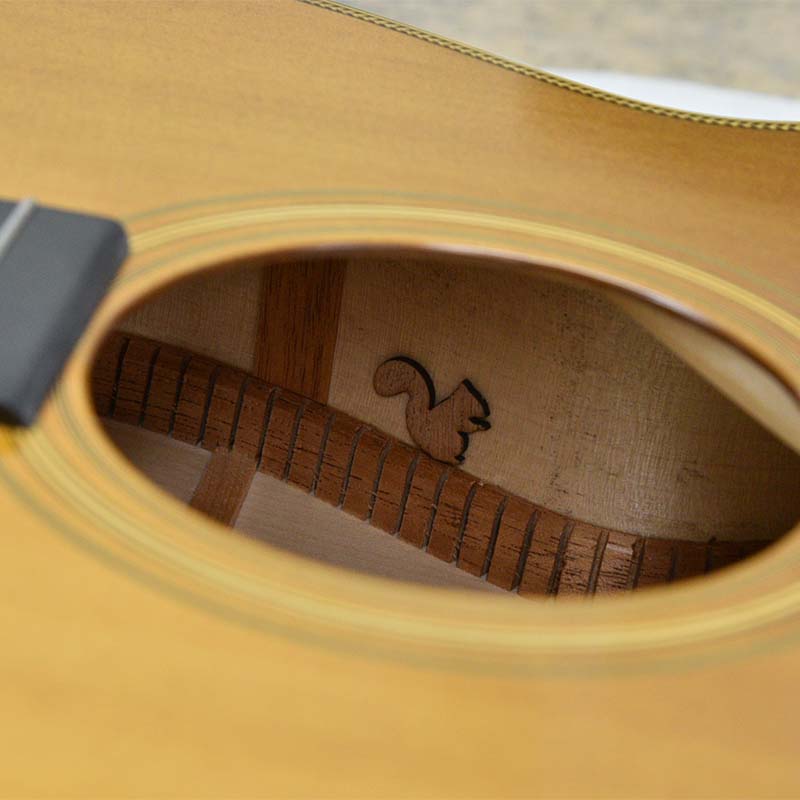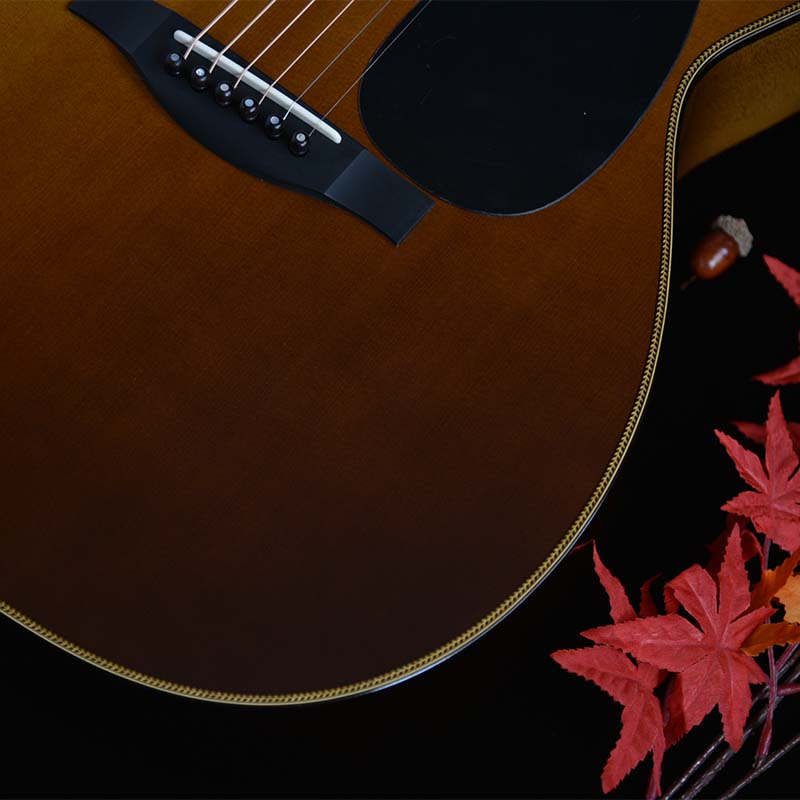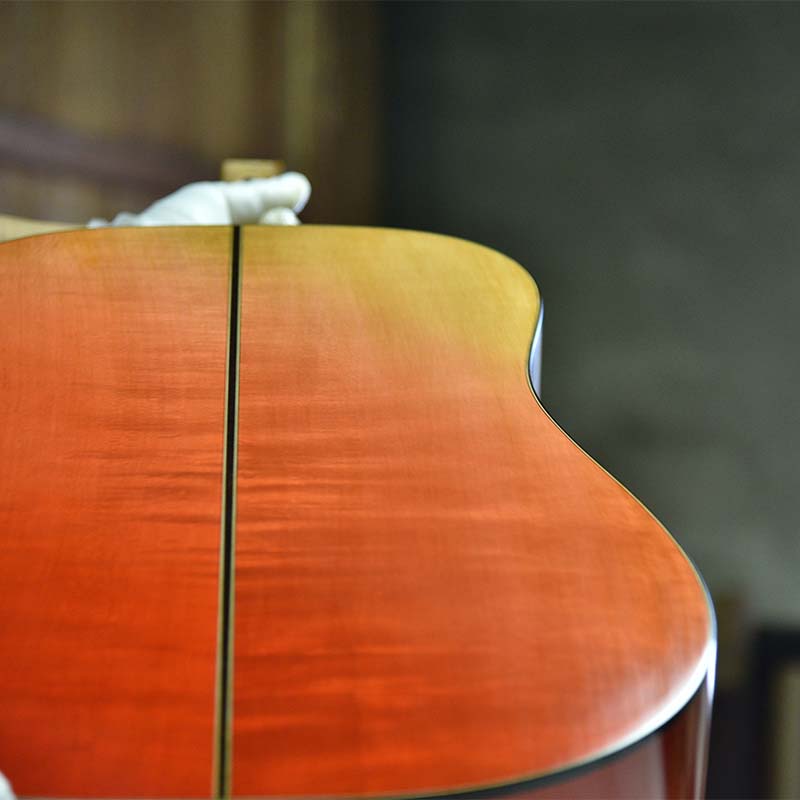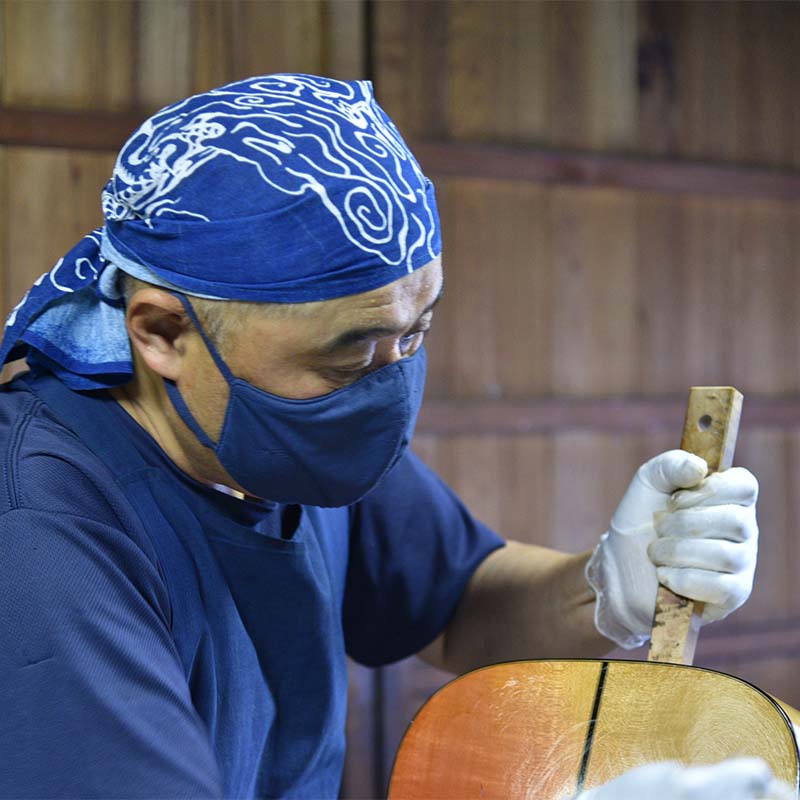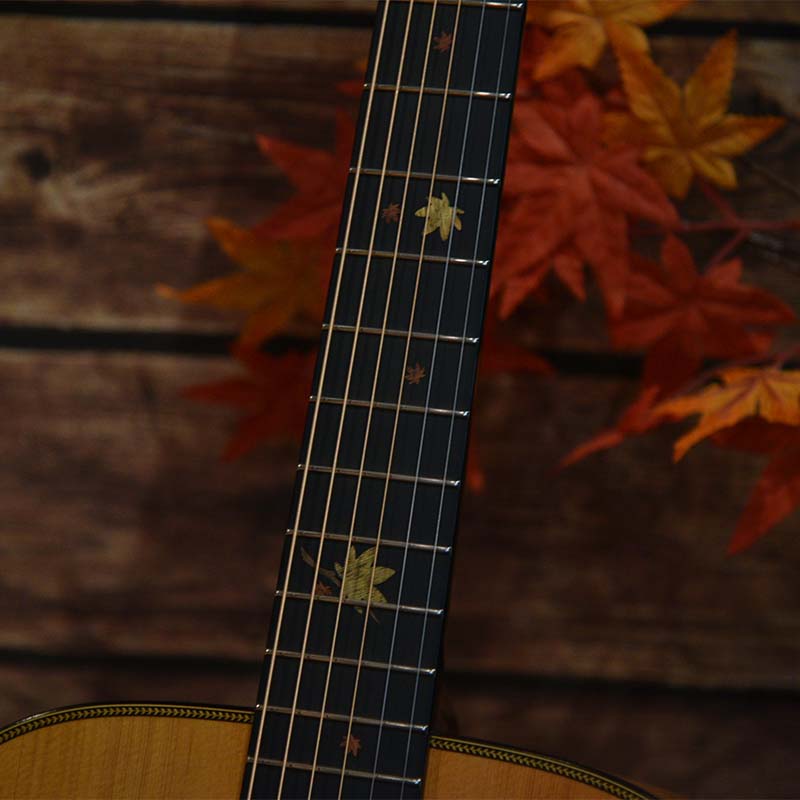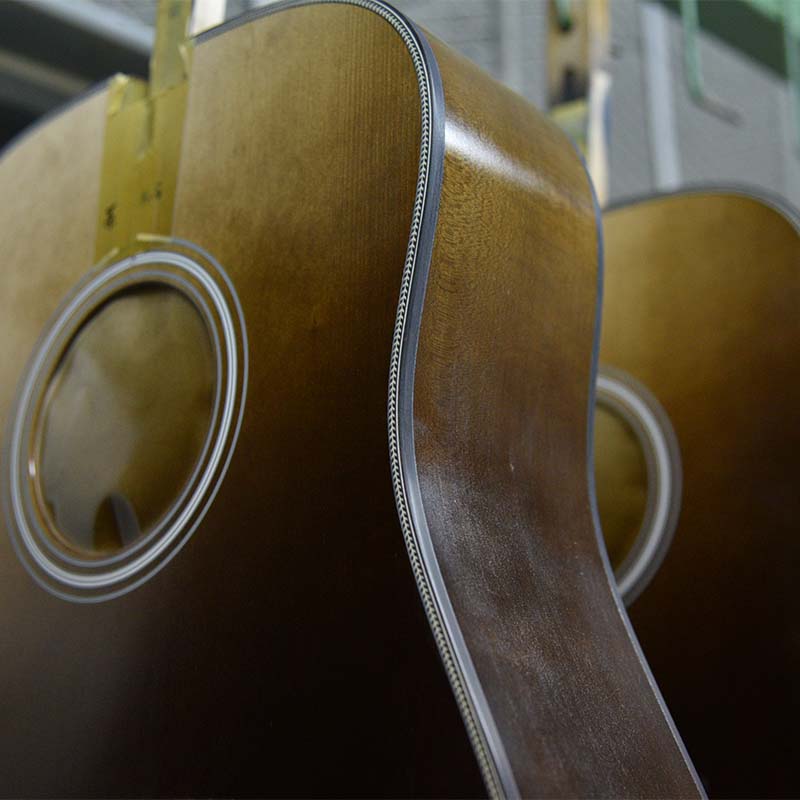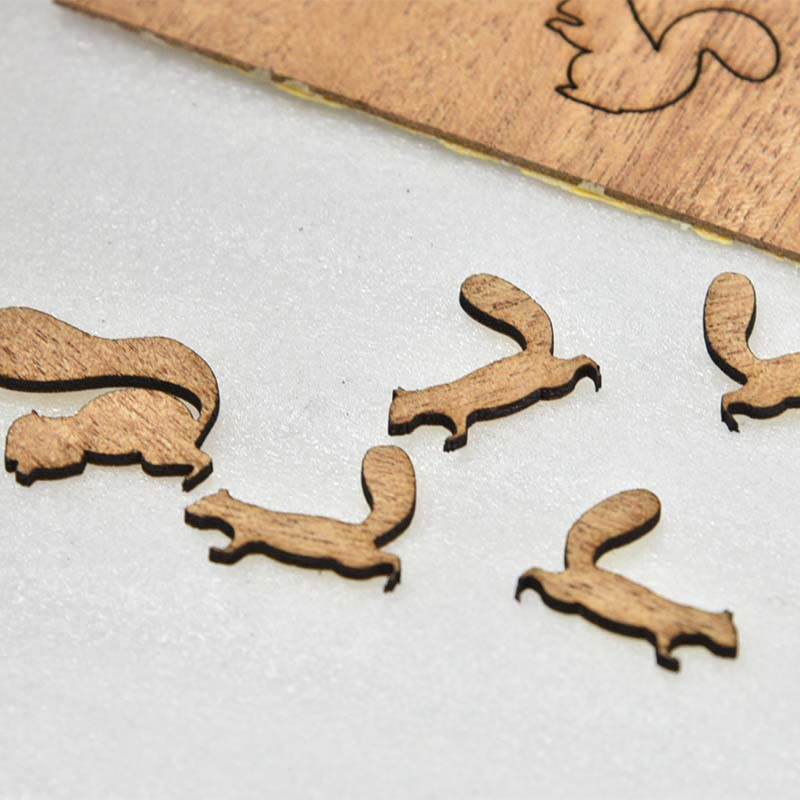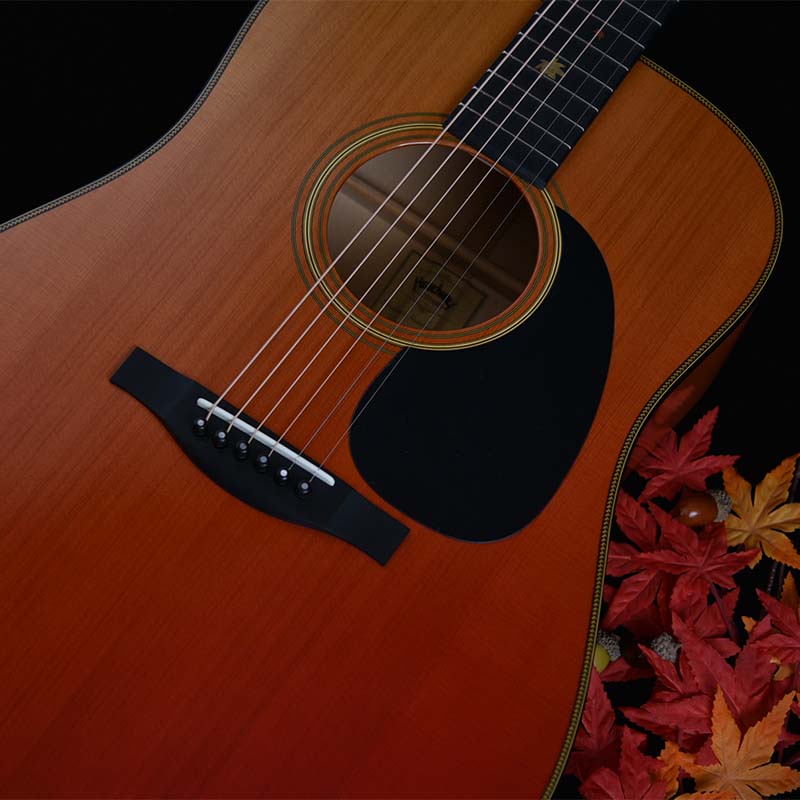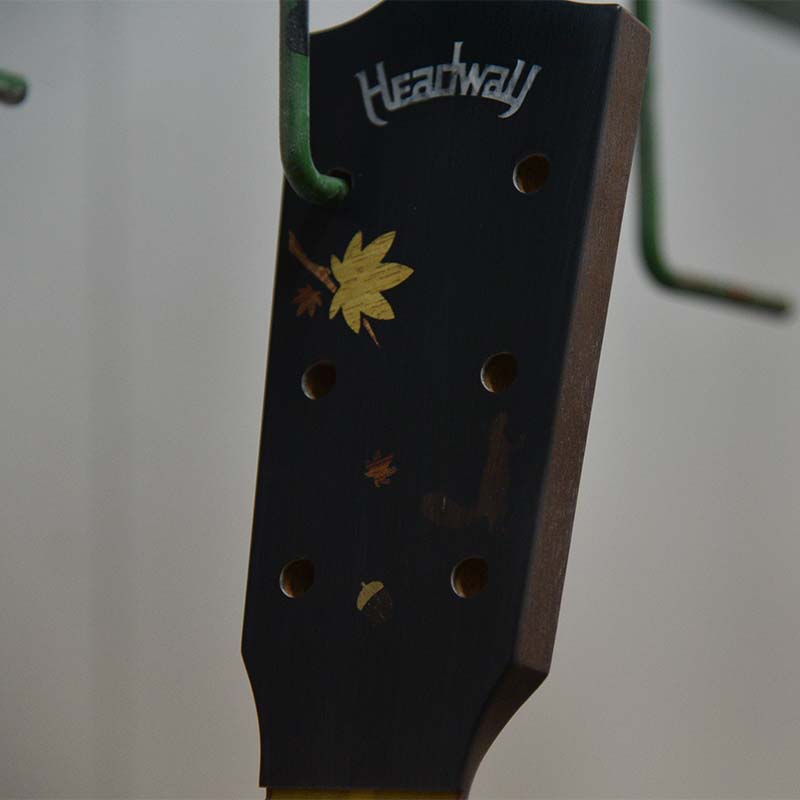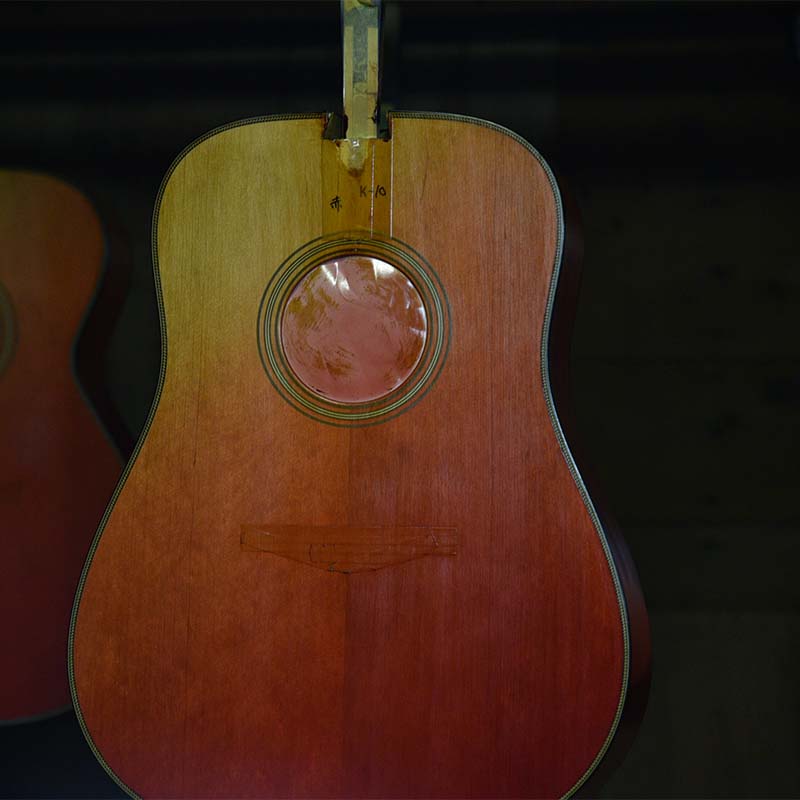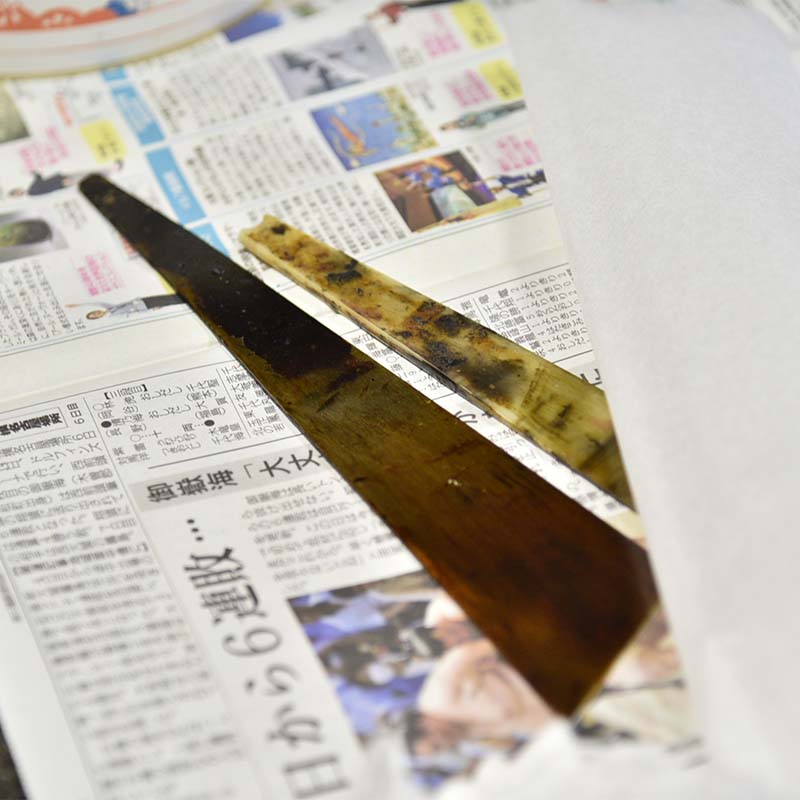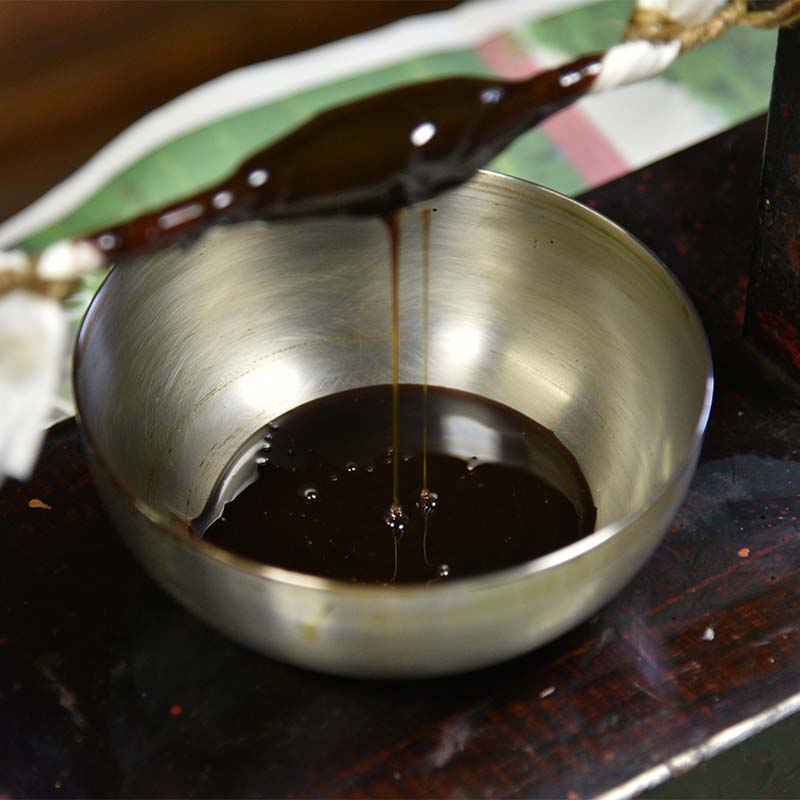
Pure Urushi lacquer sound – To truly enjoy the tonewood’s sound
Headway’s signature product is our Sakura, or Cherry blossom tree wood guitars. We pride in using unique Japanese wood materials from various regions of Japan and integrating techniques from traditional Japanese crafts into our guitars. We are constantly challenging ourselves to create guitars with the theme of “和”(Wa) which can be translated as meaning simply “Japan”, or “Japanese Style” that only a Japanese guitar maker can truly achieve. In this page, we will introduce you to a guitar made in conjunction with Mr. Kobayashi, a Urushi lacquer craftsman that works in the Asahi village, in Higashi-Chikuma-gun, Nagano prefecture.
Headway’s philosophy One of our goals when making guitars is to make an instrument that can grow alongisde you throughout the decades as you yourself grow as a player. Slowly developing and getting better and better with time. To achieve this we implement a fusion of both traditional guitar-making techniques and our own innovations we have been developing for over 45 years. With the autumn breeze, the new model arrives, the new model is a fusion of traditional techniques.
Pure Urushi lacquer sound – To truly enjoy the tonewood’s sound
Headway’s signature product is our Sakura, or Cherry blossom tree wood guitars. We pride in using unique Japanese wood materials from various regions of Japan and integrating techniques from traditional Japanese crafts into our guitars. We are constantly challenging ourselves to create guitars with the theme of “和”(Wa) which can be translated as meaning simply “Japan”, or “Japanese Style” that only a Japanese guitar maker can truly achieve. In this page, we will introduce you to a guitar made in conjunction with Mr. Kobayashi, a Urushi lacquer craftsman that works in the Asahi village, in Higashi-Chikuma-gun, Nagano prefecture.
Japanese traditions and techniques passed down from generation to generation
『Headway』×『KOBAYASHI Lacquerware』
Profile
-Noboru Kobayashi
-Born in 1964, in the Nagano prefecture
-Associate member of Kokugakkai Crafts Division, member of Shinshu Wood Crafts Association.
-Started working professionaly with Urushi Laquer in 1981.
Produced original Urushi accessories, and provided Urushi lacquer finishes for many woodworkers and furniture makers.
-With his excellent lacquer painting skills and warm personality, he creates works full of unique Urushi charm to them.
Japanese traditions and techniques passed down from generation to generation
『Headway』×『KOBAYASHI Lacquerware』
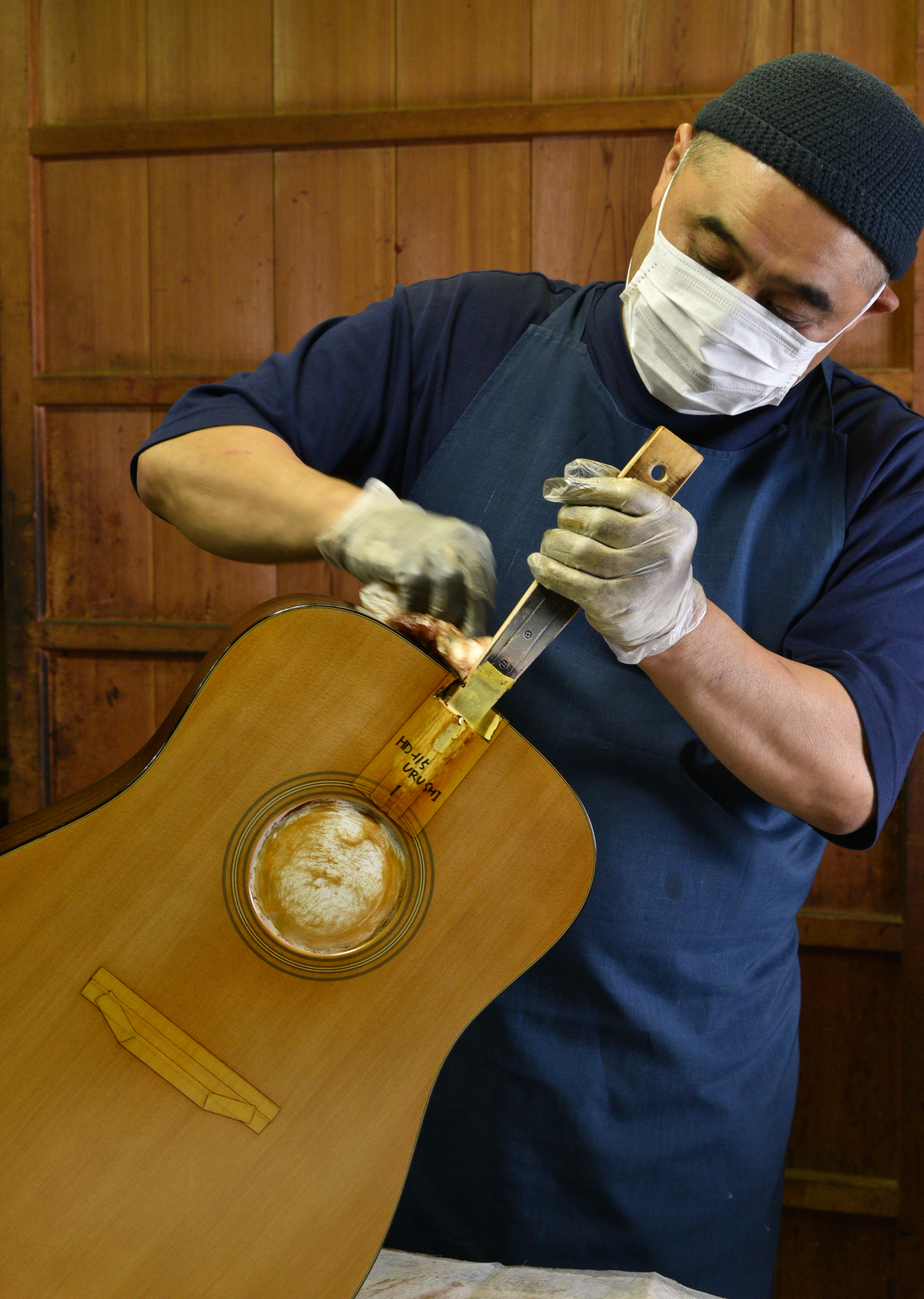
Profile
-Noboru Kobayashi
-Born in 1964, in the Nagano prefecture
-Associate member of Kokugakkai Crafts Division, member of Shinshu Wood Crafts Association.
-Started working professionaly with Urushi Laquer in 1981.
Produced original Urushi accessories, and provided Urushi lacquer finishes for many woodworkers and furniture makers.
-With his excellent lacquer painting skills and warm personality, he creates works full of unique Urushi charm to them.
Design
Squirrels and acorns
Among the colorful autumn leaves, there is a squirrel chasing acorns. The playful spirit is also included in the airy atmosphere.
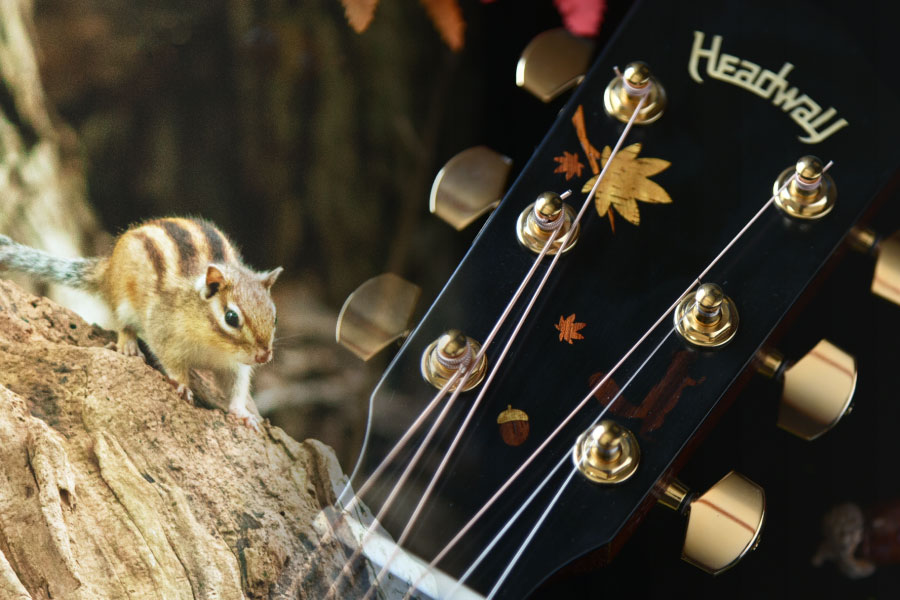
Fingerboard: Autumn leaves
The fingerboard inlay is also decorated with autumn motifs. The red and yellow autumn leaves fluttering and falling down evoke a scene of a beautiful autumn day.
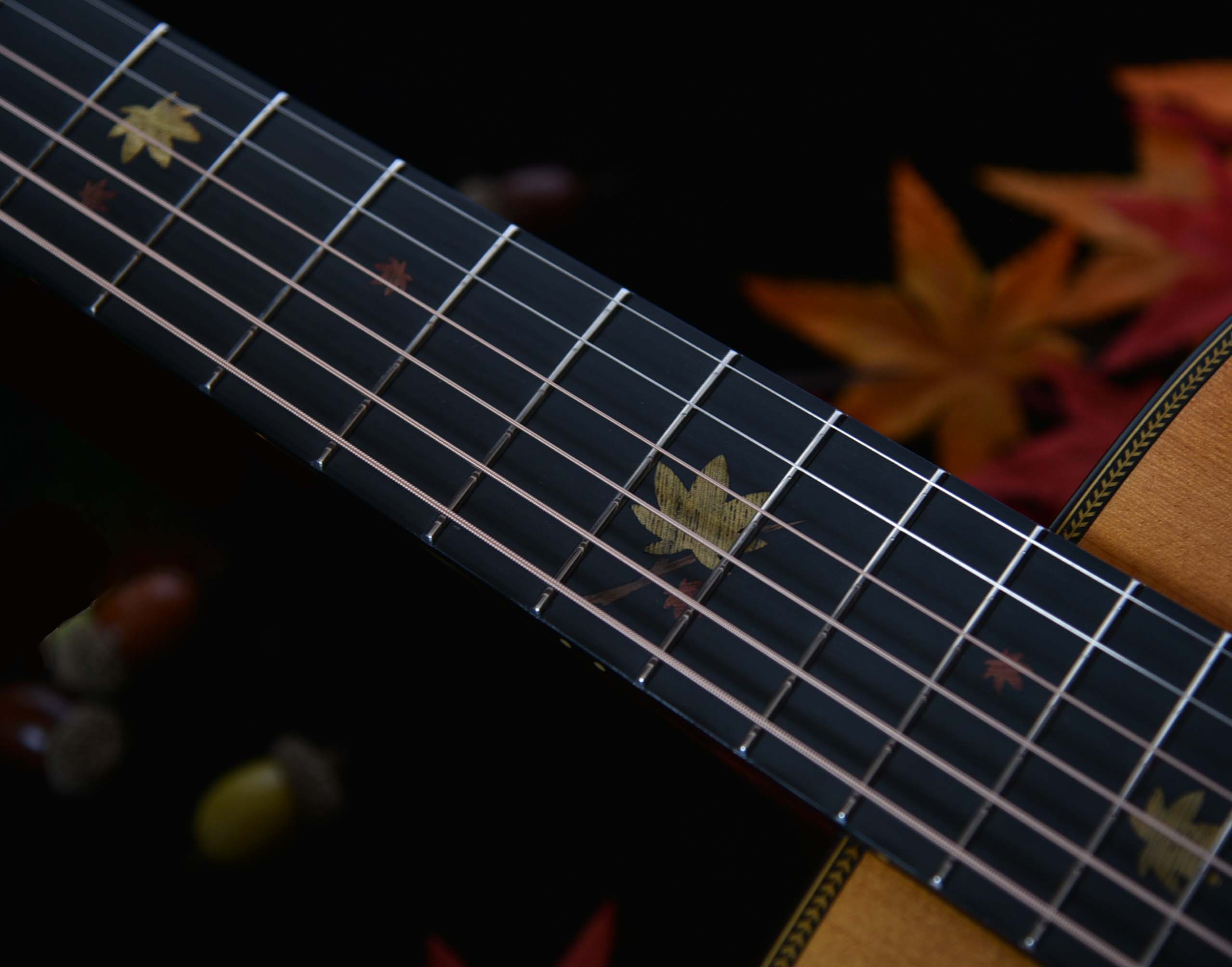
Urushi Finish & Autumn Coloration
The Urushi lacquer finish is characterized by how it allows the texture of the underlying wood grain to shine through. This year’s models feature a gradation of colors, the first attempt at such a coloration on a Urushi lacquer model. Two types were produced: “Urushi RED-GRD” with a finish inspired in the sunset coloring, and “Urushi BR-GRD” with a coloring like the nightly autumn sky.
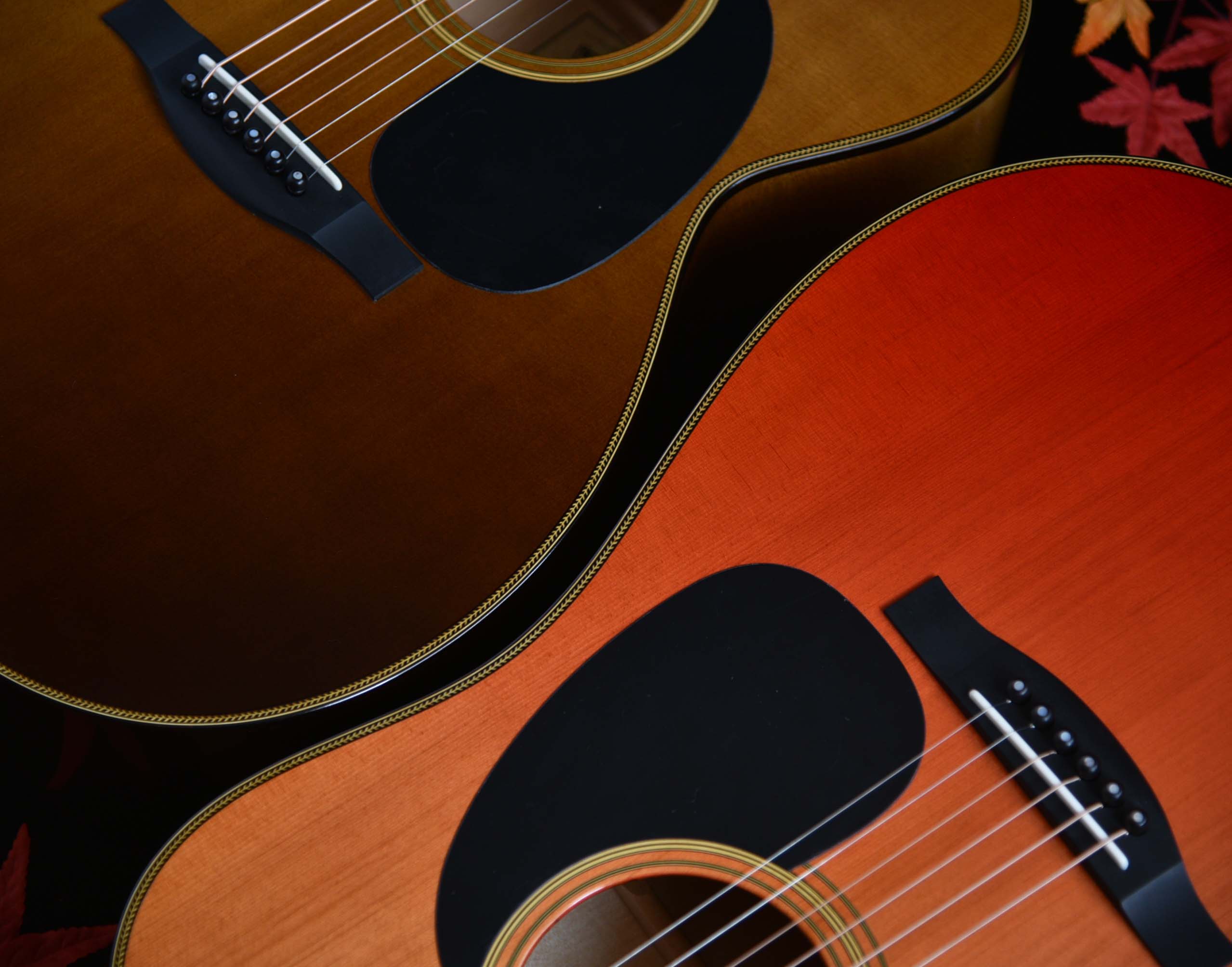
Squirrel’s Nest
The squirrel, one of the most common animals seen in autumn, is also called a symbol of happiness and a messenger of God, bringing good luck. Please look for the “lucky squirrel” randomly placed inside the body of this model.
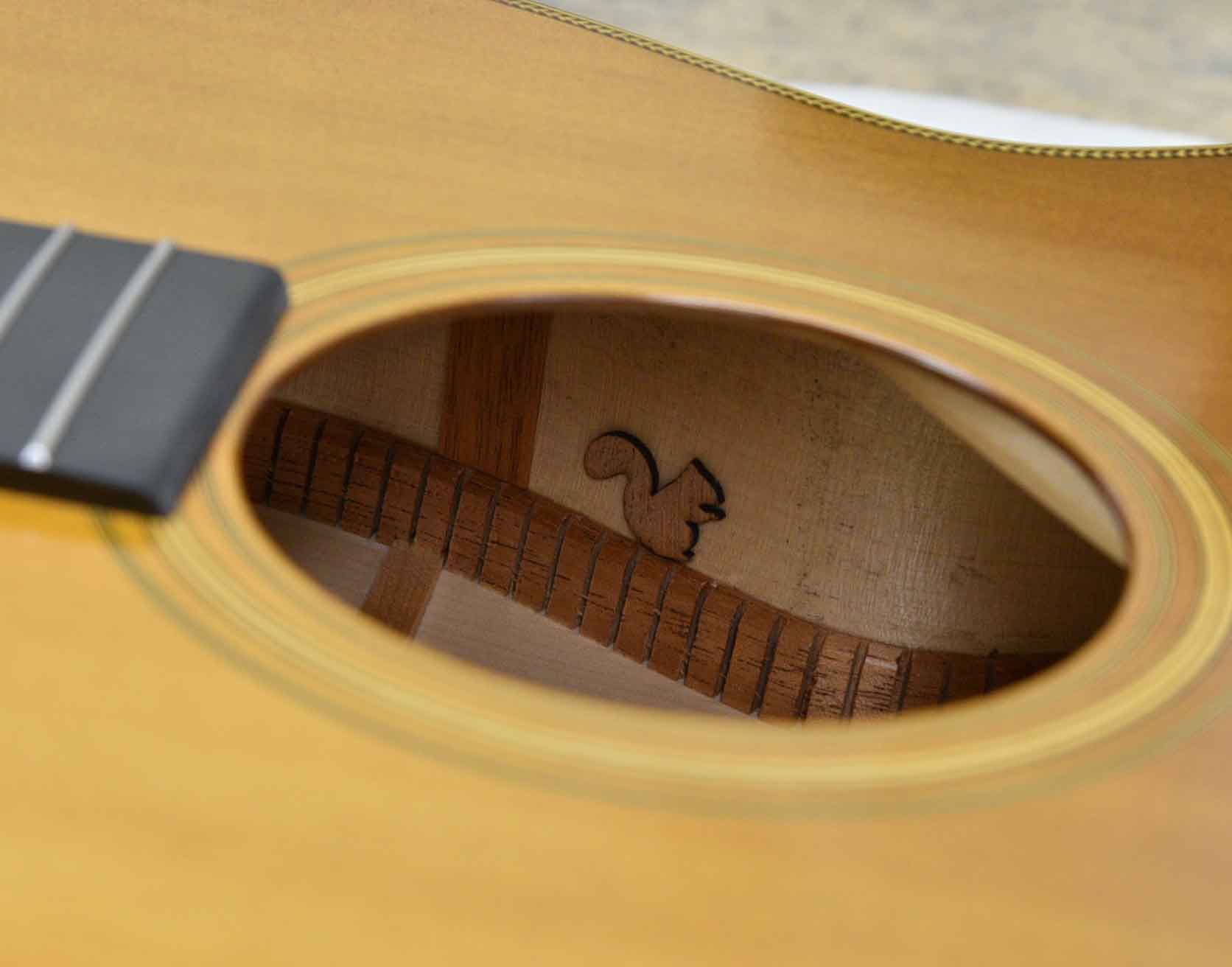
Features
Durability of Urushi-lacquer coatings
Urushi lacquer coatings are very thin, consisting of a layer with a thickness of approximately 0.05 mm. Although the thickness of about 0.05 mm may raise concerns about its durability, it adheres to the wood more firmly than solvent-based paints, resulting in a very solid finish. Urushi lacquer coating also has excellent antiseptic, waterproofing, and mothproofing effects, and it is said that “Urushi coating becomes most beautiful after a few decades”.
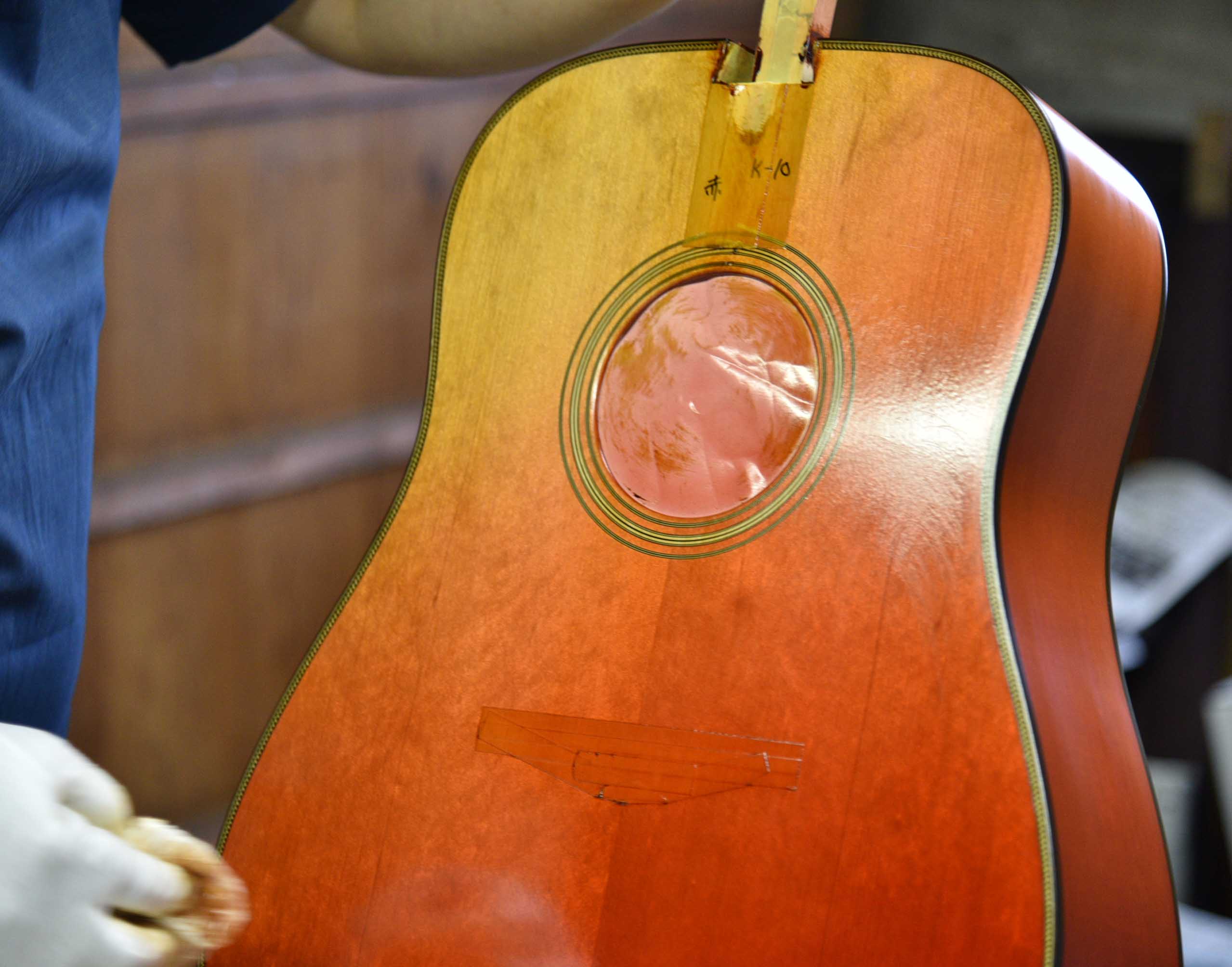
Acoustic Characteristics
This guitar is a rare example of a guitar that allows you to feel the natural and pure sound of its materials, so much so that it can be called “the pure sound of Urushi lacquer” where you can taste the original freshness of the wood with your ears. While you can experience beautiful paintwork and changes in sound quality as the material blends with the regular lacquers, Urushi is the one and only technique that allows you to experience this in the most natural way.
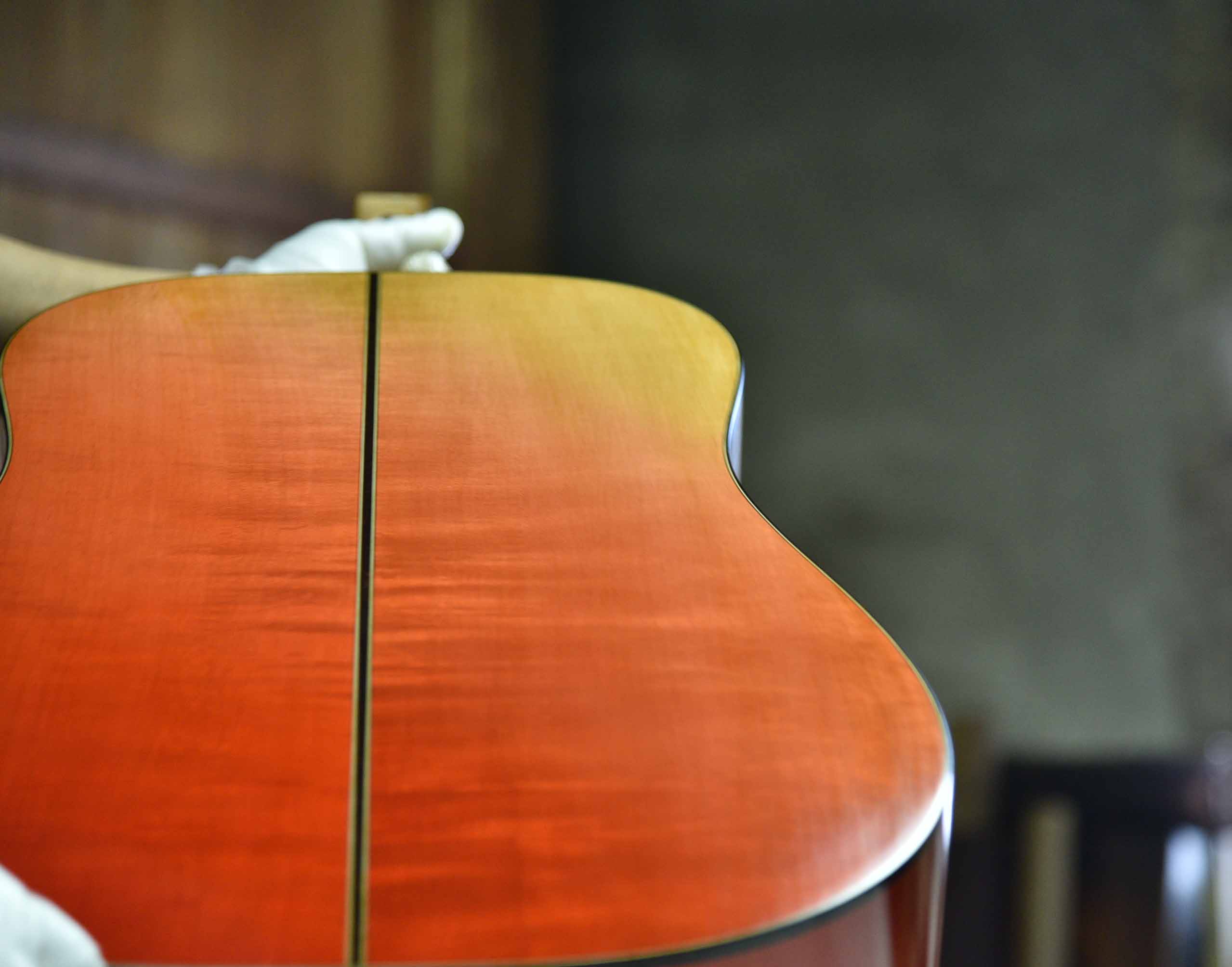
Dovetail joints where precision determines the sound
Headway uses the traditional dovetail joint method. While in recent years there have been an increasing number of models with simpler bolted joints, the dovetail joint has a larger joint area, and when finished precisely, the neck and body produce a rich sound as if they were a single piece of wood. The joint’s protrusion, called a “dovetail,” is made larger than a standard joint, and a special jig is used to join them together. Adjustment of the neck angle and other parts at this point greatly affects playability and sound, and is a process that requires a high level of skill to pull-off.
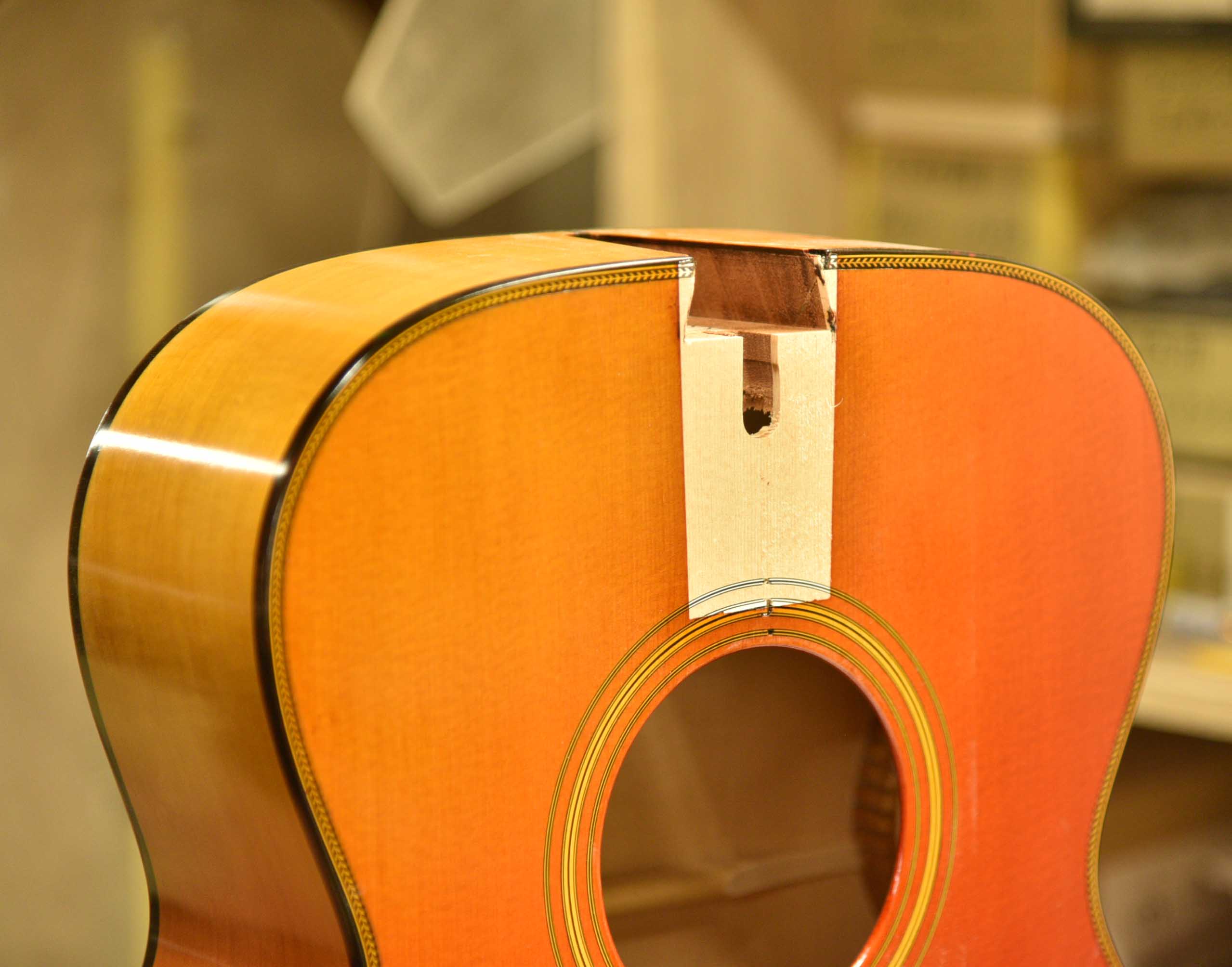
“Post-process adjustments” The promise of a top-of-the-line construction
The body and neck are painted separately and then jointed using the dovetail method. This method of jointing the body and neck after painting is called “post-finishing” or “post-process”. By using the post-process method, it is possible to fine-tune the joint angle of the body and neck after observing slight movement of the body and neck caused by the painting process. This allows the neck to be angled properly in relation to the bridge, which in turn makes it easier to set the proper saddle height and string action, thereby contributing to improved playability.
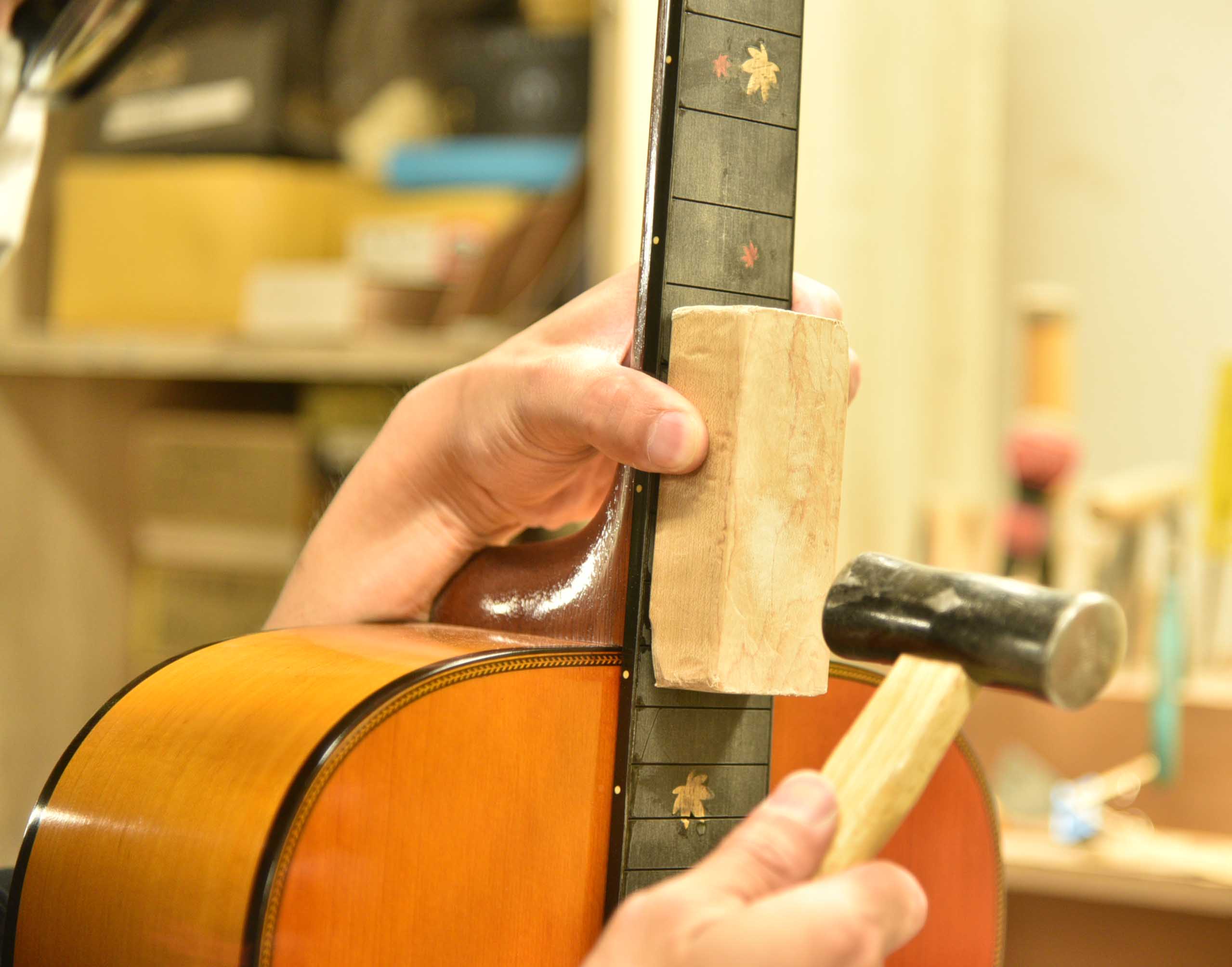
August 2023 Release Date
Limited to 6 units for each color
HD-URUSHI AL’23 SF, S/STD
HD-URUSHI AL’23 SF, S/STD
MSRP・・・JPY 300,000(w/o tax)
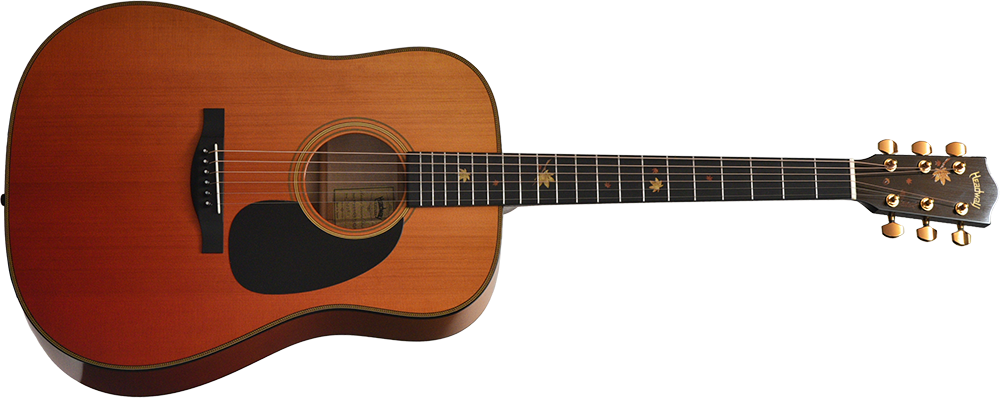
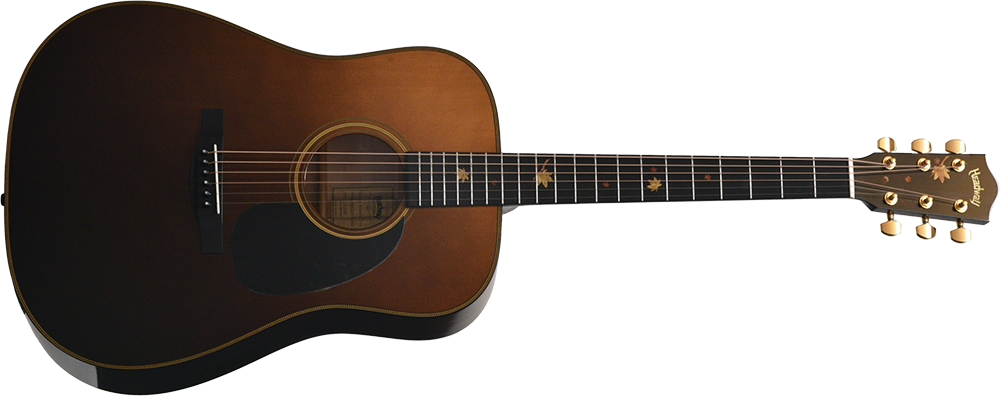
August 2023 Release Date
Limited to 6 units for each color
HF-URUSHI AL’23 SF, S/STD
HF-URUSHI AL’23 SF, S/STD
MSRP・・・JPY 300,000(w/o taxes)
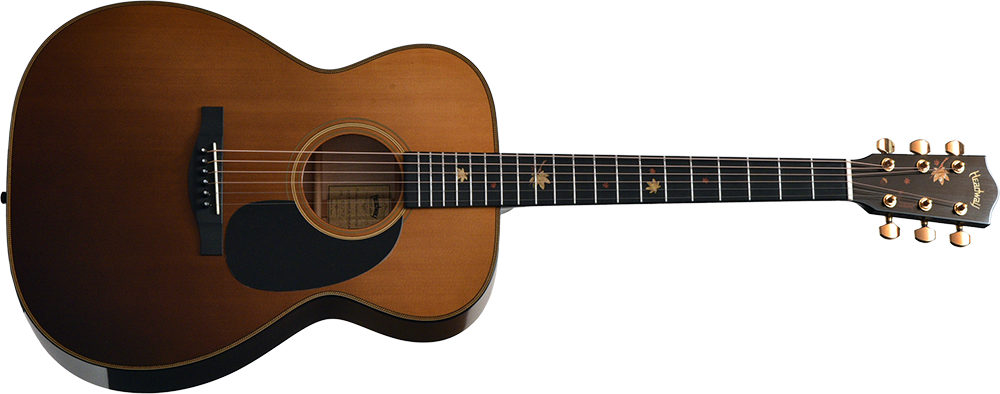
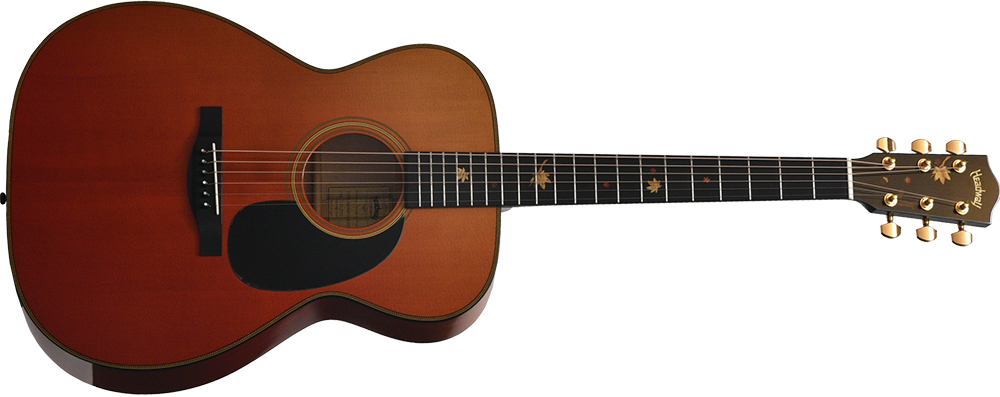
Videos
Precautions
For daily maintenance, wiping dry with a cloth is optimal. Polish and abrasive chemical cloths may damage the finish. If there is a noticeable stain, we recommend wiping it with a cloth wrung tightly with water.
Storage is the same as for a regular acoustic guitar. After use, loosen the machine heads a little and wipe it down to ensure a long life for your guitar. (A dry wipe is recommended, so please refrain from using solvents, etc.)



